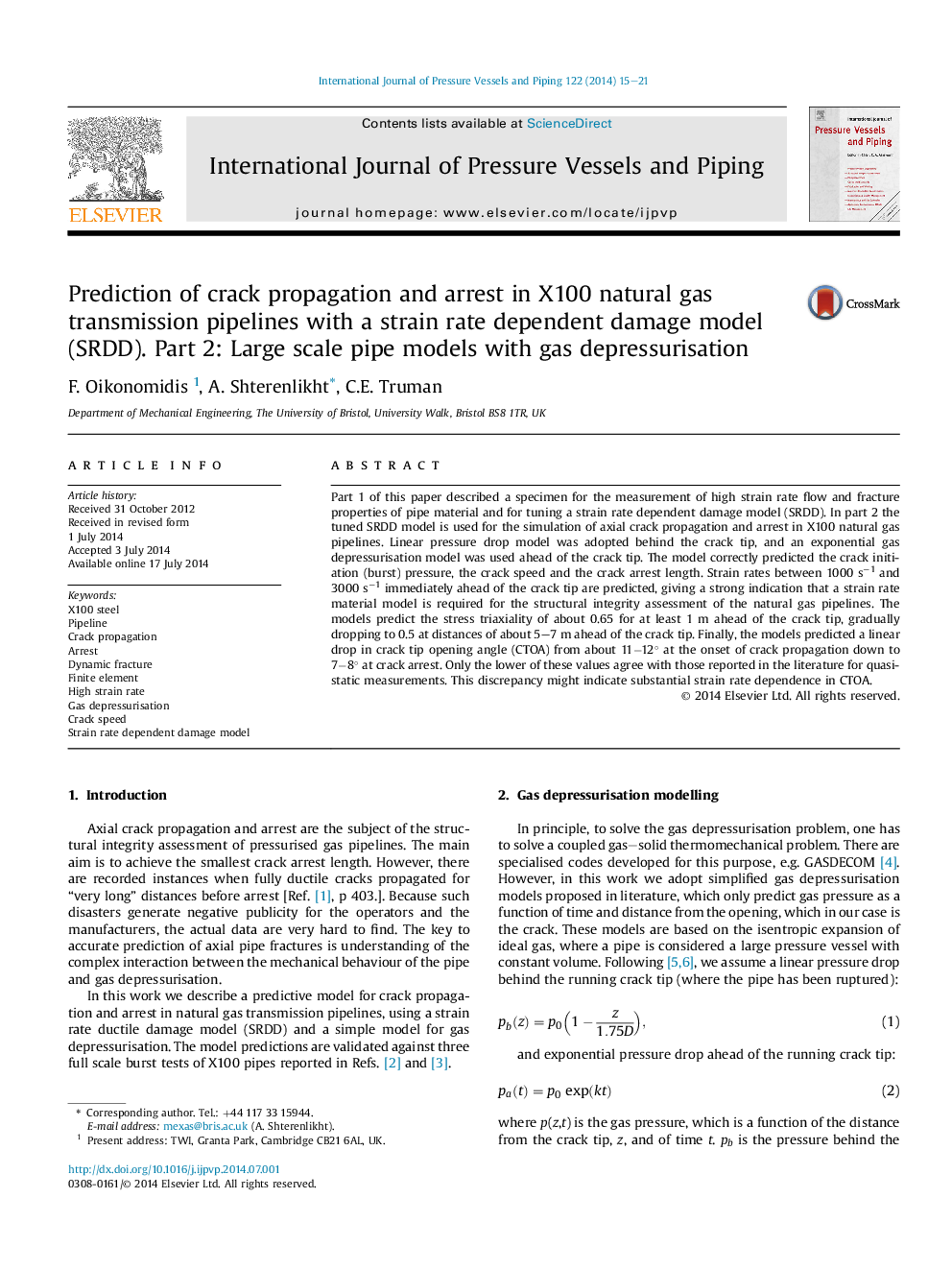| کد مقاله | کد نشریه | سال انتشار | مقاله انگلیسی | نسخه تمام متن |
|---|---|---|---|---|
| 785331 | 1466074 | 2014 | 7 صفحه PDF | دانلود رایگان |

• Finite element simulations of 3 burst tests of X100 pipes are detailed.
• Strain rate dependent damage model, tuned on small scale X100 samples, was used.
• The models correctly predict burst pressure, crack speed and crack arrest length.
• The model predicts a crack length dependent critical CTOA.
• The strain rate dependent damage model is verified as mesh independent.
Part 1 of this paper described a specimen for the measurement of high strain rate flow and fracture properties of pipe material and for tuning a strain rate dependent damage model (SRDD). In part 2 the tuned SRDD model is used for the simulation of axial crack propagation and arrest in X100 natural gas pipelines. Linear pressure drop model was adopted behind the crack tip, and an exponential gas depressurisation model was used ahead of the crack tip. The model correctly predicted the crack initiation (burst) pressure, the crack speed and the crack arrest length. Strain rates between 1000 s−1 and 3000 s−1 immediately ahead of the crack tip are predicted, giving a strong indication that a strain rate material model is required for the structural integrity assessment of the natural gas pipelines. The models predict the stress triaxiality of about 0.65 for at least 1 m ahead of the crack tip, gradually dropping to 0.5 at distances of about 5–7 m ahead of the crack tip. Finally, the models predicted a linear drop in crack tip opening angle (CTOA) from about 11−12° at the onset of crack propagation down to 7−8° at crack arrest. Only the lower of these values agree with those reported in the literature for quasi-static measurements. This discrepancy might indicate substantial strain rate dependence in CTOA.
Journal: International Journal of Pressure Vessels and Piping - Volume 122, October 2014, Pages 15–21